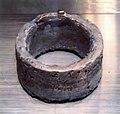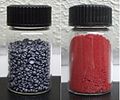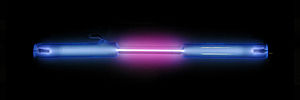The alkali metals consist of the chemical elements lithium (Li), sodium (Na), potassium (K), rubidium (Rb), caesium (Cs), and francium (Fr). Together with...
214 KB (23,516 words) - 16:21, 14 November 2024
Iodine-131 (category Isotopes of iodine)
half-life longer than hours, since most lighter isotopes of tellurium become heavier stable isotopes, or else stable iodine or xenon. However, the heaviest...
38 KB (4,377 words) - 09:05, 2 November 2024
Praseodymium (section Isotopes)
isotopes lighter than 141Pr is positron emission or electron capture to isotopes of cerium, while that of heavier isotopes is beta decay to isotopes of...
37 KB (4,830 words) - 15:05, 16 September 2024
substances and investigations into isotopes". 1922: Aston receives the Nobel Prize in Chemistry "for his discovery of isotopes in a large number of non-radioactive...
29 KB (3,578 words) - 05:10, 28 October 2024
This list contains fictional chemical elements, materials, isotopes or subatomic particles that either a) play a major role in a notable work of fiction...
100 KB (2,149 words) - 22:18, 30 October 2024
Plutonium (section Isotopes and nucleosynthesis)
to power some spacecraft. Plutonium isotopes are expensive and inconvenient to separate, so particular isotopes are usually manufactured in specialized...
139 KB (14,981 words) - 08:15, 9 November 2024


























